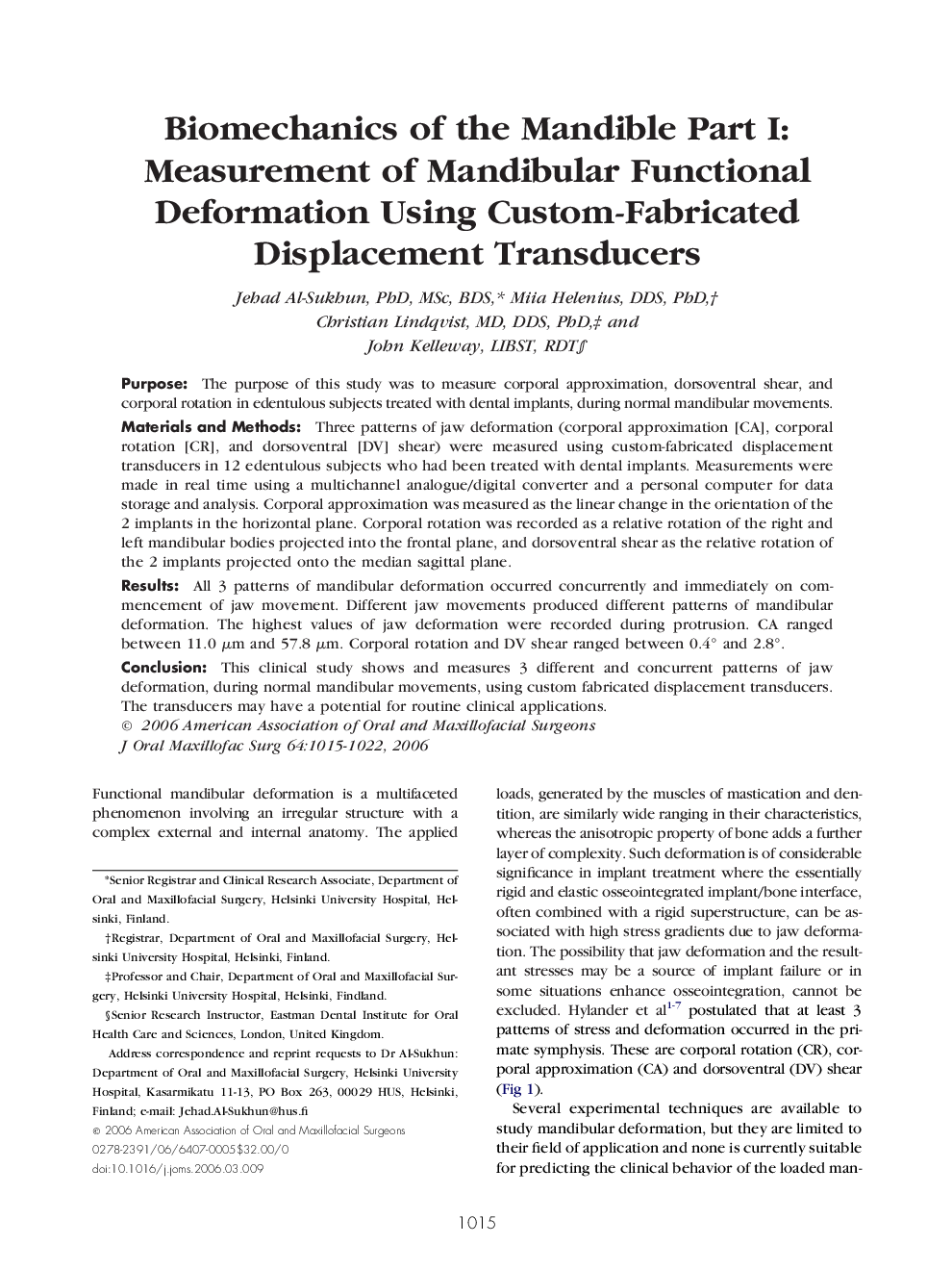| Article ID | Journal | Published Year | Pages | File Type |
|---|---|---|---|---|
| 3155575 | Journal of Oral and Maxillofacial Surgery | 2006 | 8 Pages |
PurposeThe purpose of this study was to measure corporal approximation, dorsoventral shear, and corporal rotation in edentulous subjects treated with dental implants, during normal mandibular movements.Materials and MethodsThree patterns of jaw deformation (corporal approximation [CA], corporal rotation [CR], and dorsoventral [DV] shear) were measured using custom-fabricated displacement transducers in 12 edentulous subjects who had been treated with dental implants. Measurements were made in real time using a multichannel analogue/digital converter and a personal computer for data storage and analysis. Corporal approximation was measured as the linear change in the orientation of the 2 implants in the horizontal plane. Corporal rotation was recorded as a relative rotation of the right and left mandibular bodies projected into the frontal plane, and dorsoventral shear as the relative rotation of the 2 implants projected onto the median sagittal plane.ResultsAll 3 patterns of mandibular deformation occurred concurrently and immediately on commencement of jaw movement. Different jaw movements produced different patterns of mandibular deformation. The highest values of jaw deformation were recorded during protrusion. CA ranged between 11.0 μm and 57.8 μm. Corporal rotation and DV shear ranged between 0.4° and 2.8°.ConclusionThis clinical study shows and measures 3 different and concurrent patterns of jaw deformation, during normal mandibular movements, using custom fabricated displacement transducers. The transducers may have a potential for routine clinical applications.
